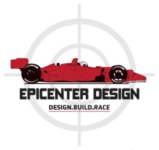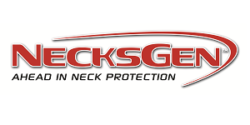Reprinted with permission of Brian Allman and Northstar Motorsports, Ltd.
No matter how long you’ve been racing, you should appreciate the need for safety apparel.
Knowledgeable estimates put the temperature of a race car fire somewhere between 1200 and 1700 degrees. As human flesh burns at a mere 180 degrees, the value of protection from the horrible effects of fire is beyond dispute.
In order to have the best protection against a race car fire, you’ll want to examine each component of safety apparel separately — and in detail. Perhaps you’re about to purchase these items for the first time; or, you may be an accomplished racer who has owned safety apparel for years. Regardless of your own racing experience, this guide should provide you with an informative overview as well as a practical checklist.
Suit
Any discussion of safety apparel must begin with the driver’s suit. A driver’s suit protects against injury from fire. To be most effective it must:
- Be Non-Combustible
- Maintain Its Structural Integrity
- Insulate Against Heat Transfer
These three considerations, taken together, serve to define the requirements for a highly adequate driving suit. While each consideration is important, understand that it is their combination which enables suits to sacrifice themselves, thereby protecting the driver. In this way, every suit’s material and construction works to supply lifesaving protection.
Racing suits are available in one through five layer versions. Four and five layer suits generally specified for drag or funny car racing, so I’ll confine my remarks to the one through three layer versions. In three layer suit construction, the outermost layer must provide resistance to direct flame and maintain its structural integrity. Next, a central insulating layer must block heat transfer while the inner layer acts as a final barrier against flame and heat. Ideally, this inner layer should also absorb perspiration.
By contrast, a two-layer suit eliminates the batting, or middle layer, and depends on the air pocket for its insulating properties. Two-layer suits, while generally lighter, offer less protection than three layer suits.
Finally, single layer suits only offer resistance to flame, as these suits are capable of sustaining themselves for four to eight seconds. They offer just momentary insulation from heat transfer and practically no structural integrity; they are, therefore, not recommended.
Of course, suits are only part of our overall safety apparel “system.” There are a number of other important components which are required by every driver.
Underwear
Racing underwear is critically important, providing the final barrier to injury from fire. It is available in weaves which can actually aid in both insulation and driving comfort. Suitable underwear materials include Monex and PBI (polybenszmidazole), the choice of quality manufacturers. An often under looked and undervalued element in racing underwear is a balaclava, or hood sock. Balaclavas are also made in Nomex and PBI and should be seriously considered, especially if the driver has a beard or mustache. One or two pairs of Nomex or PBI socks will also round out this essential first layer.
Shoes & Gloves
Shoes and gloves are additional pieces in our apparel “system.” A traditional leather shoe, once on fire, will quickly shrink with enough force to crush a foot, breaking any number of bones. Drivers’ shoes are Nomex lined and use exterior leather only to increase wear resistance.
Gloves should also be of Nomex material, because a traditional leather glove will act like a traditional leather shoe. I believe that a two layer glove is the minimum you should use; they should only feature leather on the palms to provide a good grip or “feel.”
Helmets
The selection of a quality racing helmet is an extremely important task. To begin, you must make sure that the helmet under consideration bears the latest Snell sticker. Snell, an industry recognized evaluating group, conducts research, testing and the setting of standards which define the performance and safety characteristics for racing helmets. These standards are established for five year periods and represent the best the industry has to offer. There are several helmet options available in the marketplace. For example, you may choose traditional fiberglass or the newer, lighter materials such as Kevlar, Carbon Fibre, or other composites. Open cockpit drivers will choose a full face version, while closed cockpit drivers may opt for an open face version. A full face version always offers the most protection and is strongly recommended. It is vitally important to always check with your club or sanctioning body in order to comply with their current helmet requirements.
Prior to purchasing your helmet, realize that a good helmet works just like a good driving suit; i.e., it is designed to protect you by sacrificing itself. The shell of the helmet is the main structural element and must be hard enough to resist penetration by a sharp object. Upon impact, the shell should delaminate, allowing the helmet liner to spread and absorb the force of the head’s movement against the inner surface of the helmet. Once delamination occurs, the helmet is unfit for further use. As such damage may not be apparent, an impacted helmet should be returned to the manufacturer for a thorough inspection.
NOTE: As of VSCDA’s 2021 Race Season, all drivers are required to have a SA 2015 or newer Snell-rated helmet. Belts are allowed for 5 years from manufactured date.
Head and Neck Restraints
VSCDA REQUIRES, a Head and Neck Restraint device for additional protection of the head and neck. Regardless of the unit or model you choose, the most important consideration is how the unit fits you and your car. With most of these devices, specific requirements for seatbelt spacing, seatback angle and other issues are spelled out for your application. We strongly recommend working closely with a licensed dealer for the device you choose to insure the proper installation and use of the device.
Summary
The examination of purchasing safety apparel has concentrated on the critical components of a total “system.” Your safety depends upon all of these components working together, the total being greater than the sum of its parts. Safety apparel is purchased for your personal protection, so you must begin to think of these pieces as an investment made in yourself.
- Consider only well-tested, quality products supplied by a reputable proven manufacturer.
- Remember that multiple layers, plus underwear, offer maximum protection.
- Insist on a proper fit. Your driving suit should fit loosely, so that the air barrier becomes an extra layer of protection.
- Maximize your own safety requirements. With all due respect, many sanctioning body requirements are simply too minimal.
- Treat quality protective gear as both an important and necessary part of your racing budget.
Mindful that skin and bone are harder to replace than a broken engine, I hope that you will purchase safety equipment with your well-being, if not your survival, in mind.











